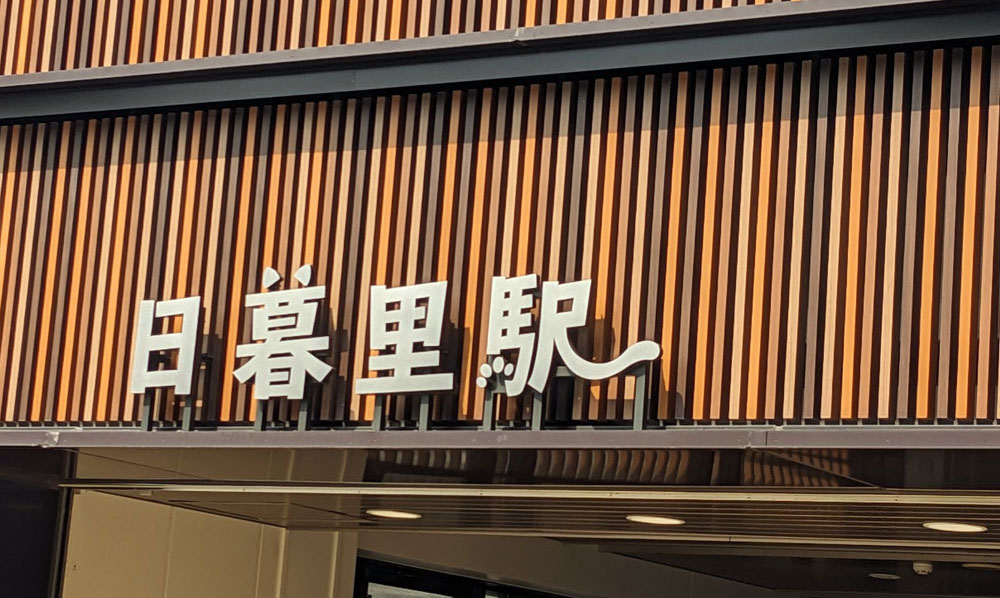
From Nippori to Yanesen and Ueno! A stroll brimming with old-town charm
If you wish to stroll through Tokyo's “good old-fashioned downtown”, the route from Nippori through Yanesen (Yanaka and Nezu) to Ueno is absolutely recommended. Packed with charm – history, gourmet food, temples and shrines, and retro shopping streets – we guide you through this course, including estimated time, distance, and highlights!
Course Overview (Duration: approx. 4–5 hours, Walking distance: approx. 4km)
The table below summarises the main sections, distances, and highlights of this walking route. Walking time totals approximately 1.5 to 2 hours, but please allow around 4 to 5 hours in total, including time for exploring each spot and taking breaks.
Overview of the walking route
- Start! Nippori Station
- Yanaka Cemetery (Enjoying the fresh greenery or cherry blossoms on the way to Yanaka Ginza)
- Approximately 0.5 kilometres (about 10 minutes)
- Strolling through Yanaka Ginza Shopping Street
- Strolling through Yanaka Ginza Shopping Street
- Yanaka Menchi (The Menchi Katsu with the inevitable queue)
- Pomegranate🌟 Lamp House (Turkish Lamp Specialists)
- (Shopping street total length: approx. 170m)
- Yanaka Ginza → Nezu Shrine
- Snake Path (site of the former Aizome River, winding alleyway)
- Yomise Street (featuring Café CIBI and the long-established eel restaurant “Yoshi-ri”)
- Approximately 1.5 kilometres (about 30 minutes)
- Nezu Shrine (A Stroll Through the Precincts)
- Snake Path (site of the former Aizome River, winding alleyway)
- Yomise Street (featuring Café CIBI and the long-established eel restaurant “Yoshi-ri”)
- Nezu Shrine → Ueno Imperial Gift Park
- Thousand Torii Gates
- Shinobazu Pond
- Tōshōgū
- Approximately 2 kilometres (about 30 minutes)
- Destination: Ueno Station
Now then, starting from Nippori Station, I shall guide you step by step through the route that takes you around the charming Yanesen (Yanaka and Nezu) area before reaching Ueno Station, illustrated with photographs and maps.
The Complete Guide to the Walking Route from Nippori to Ueno Station
Starting from Nippori Station: Begin your stroll through the old town at Yanaka's temple district and the 'Great Buddha of Yanaka'
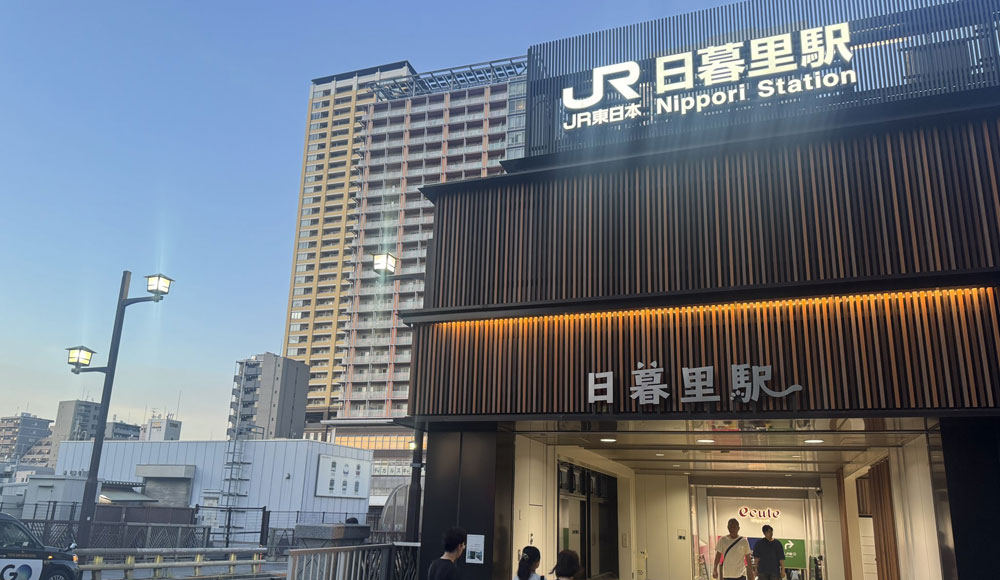
So, first things first: meet at the West Exit of JR Nippori Station and we'll set off from there!
First, head towards the temple district area of Yanaka. Enter ‘Yūyake Dandan’ as your destination into Google Maps on your smartphone. That is the entrance to Yanaka Shopping Street. Follow the map and you will enter Yanaka Cemetery.
A stroll through Yanaka Cemetery
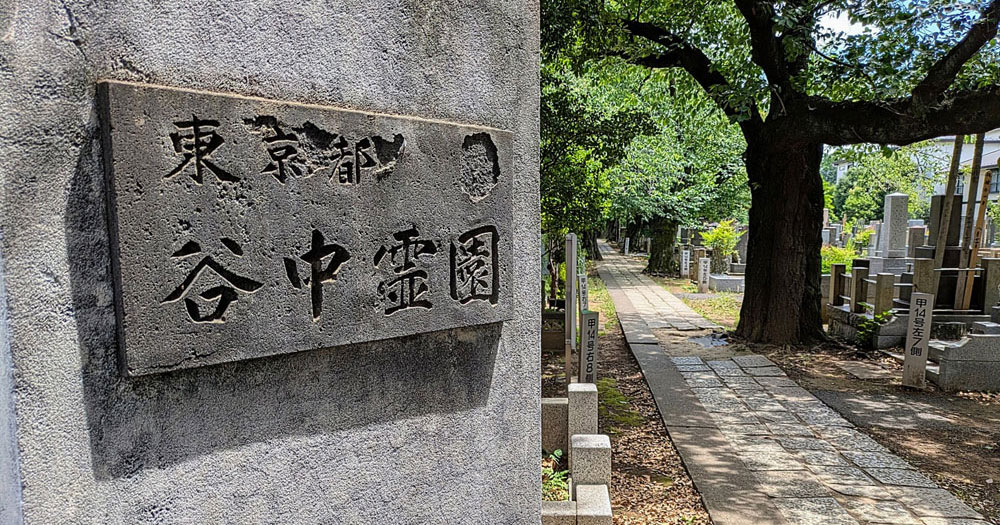
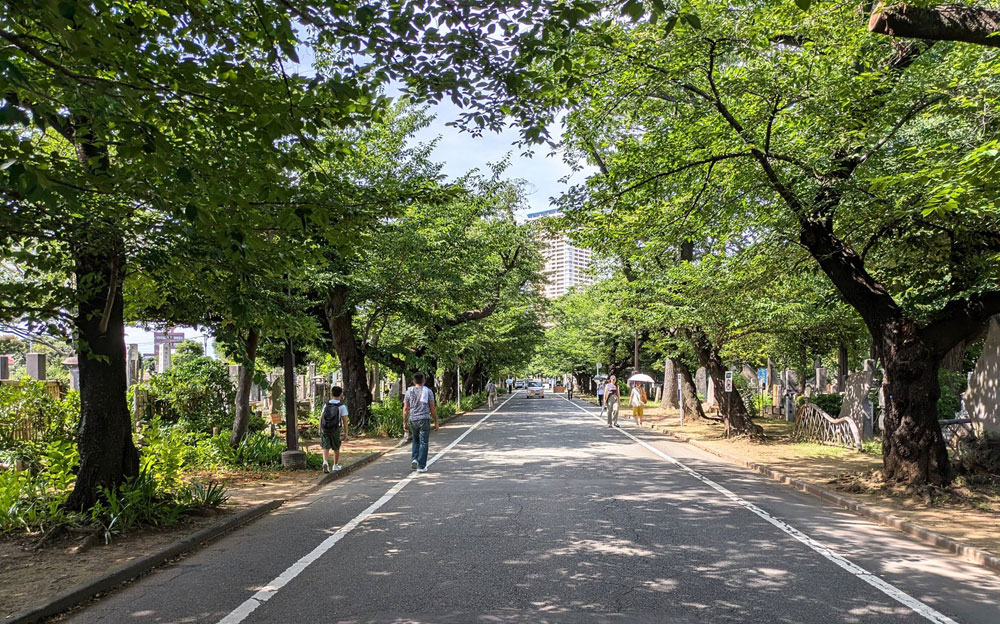
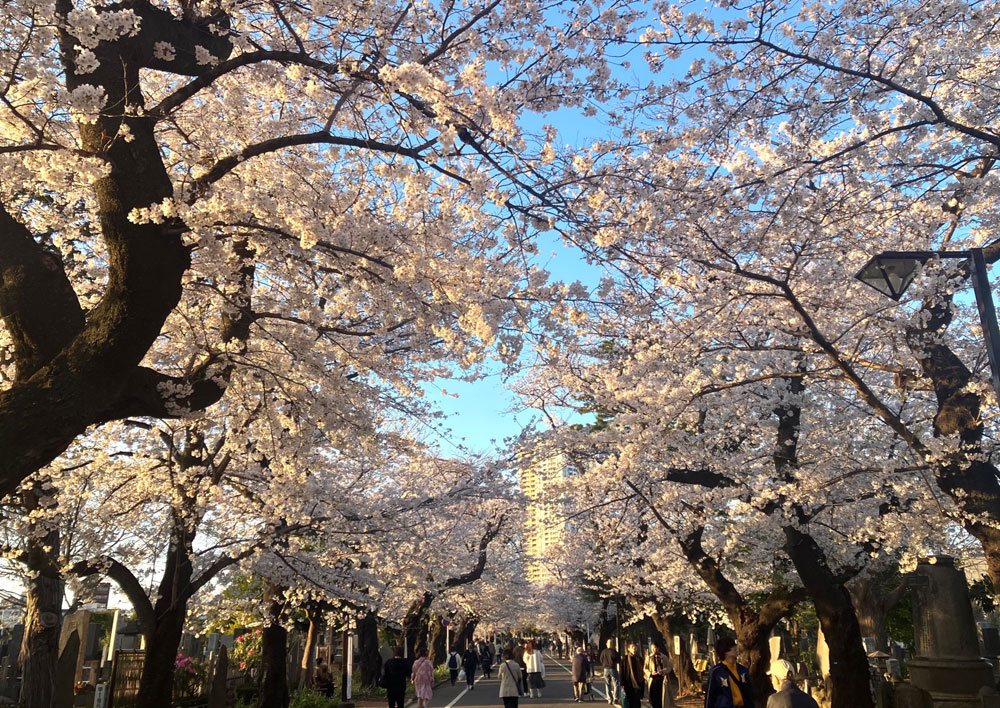
When one speaks of Nippori, one speaks of Yanaka Cemetery.
This is a historic cemetery. It's also perfect for a stroll. Cherry trees are everywhere, and spring is truly magnificent. Even outside spring, you can enjoy the refreshing new greenery.
Yanaka Cemetery contains the graves of many notable figures, including that of Tokugawa Yoshinobu, the last shogun of the Edo shogunate. His circular mound tomb lies alongside that of his wife, where the final shogun to survive into the Meiji era rests. Other graves of notable figures from the Meiji period onwards are scattered throughout, including those of Shibusawa Eiichi (businessman) and Yokoyama Taikan (Japanese-style painter). It is a pleasure to stroll through the tranquil grounds and reflect on history (please remember to walk with respect, as this is a cemetery!).
I once spent ages searching and managed to find the grave of Eiichi Shibusawa (the businessman), but it's quite a challenge if you don't know the location. Unless you have a particular connection, I'd recommend just thinking “Ah, so it's there”.
Enjoying the fresh greenery, a walk of about 10 minutes (approximately 0.5km) will take you to Yanaka Ginza Shopping Street.
Strolling through Yanaka Ginza Shopping Street
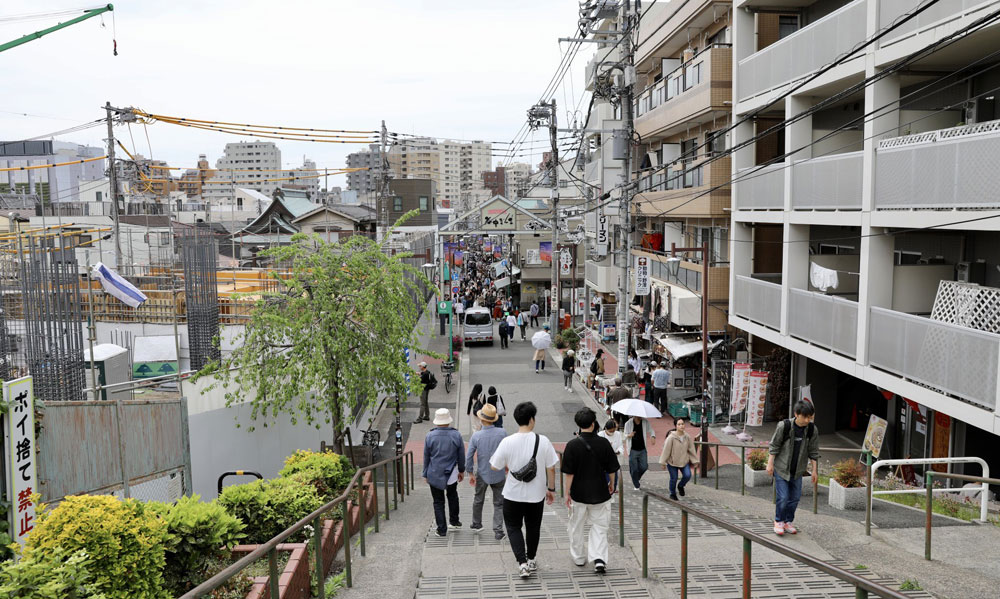
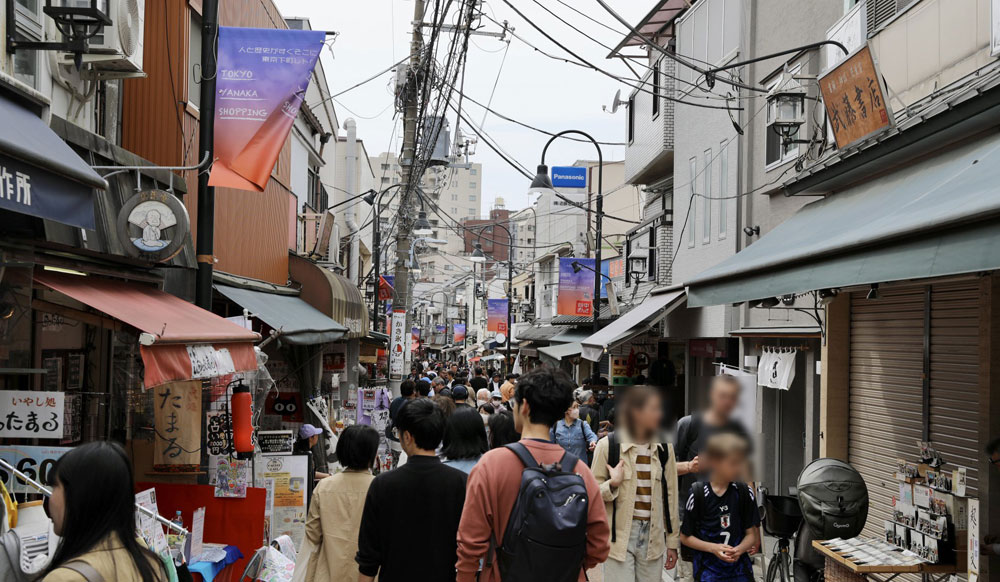
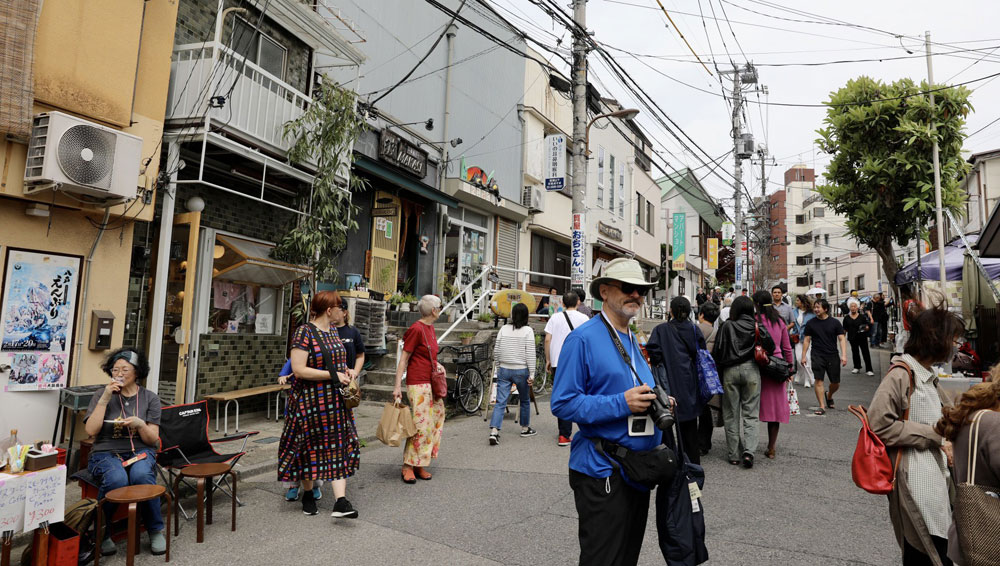
Heading south along the central avenue of Yanaka Cemetery, the steps known as “Yūyake Dandan” appear directly ahead. This is the entrance to the famous Yanaka Ginza Shopping Street.
The Sunset Steps consist of 36 steps. They derive their name from the beautiful sunset views they offer at dusk. At the top of the steps stands a simple sign bearing the name “Yūyake Dandan”, and the view unfolds onto a traditional downtown scene often used for filming dramas.
Yanaka Ginza is a short shopping street stretching approximately 170 metres, yet it is popular for its Showa-era retro atmosphere. Around 60 shops line its narrow passage. Said to have developed from a post-war market for ordinary folk, the narrow street is packed with stylish cafés, gift shops and other establishments.
In recent years, it has become popular with overseas tourists, and many visitors can be seen strolling and enjoying food on the go. That said, eating while walking is prohibited in the shopping street. Please stop and eat what you have purchased on the spot.
Even just window shopping at shops that catch your eye as you stroll along is enjoyable. Next, we introduce some recommended shops in Yanaka Ginza Shopping Street.
Yanaka Mince

When it comes to the iconic presence of Yanaka Ginza, it's the freshly fried “Yanaka Menchi”.
Among the shopping street's most popular establishments are “Niku no Suzuki” and “Niku no Sato”. Their beef-packed minced cutlets, though compact, are succulent and remain a signature item beloved by all ages.jBy evening, it is not uncommon for queues to form at both shops.
Yanaka shipo ya



This area is also known as the “Cat Town”, and its shopping street boasts shops selling cat-themed goods and “Yanaka Shippo-ya” (cat tail-shaped doughnuts), alongside an array of adorable cat-motif sweets. If you're lucky, you might even encounter cats relaxing at leisure in the back alleys. Stroll through the shopping street and savour the nostalgic atmosphere of a Shōwa-era downtown neighbourhood alongside its culinary delights.
Pomegranate Lamp House



A rather unusual shop called “Pomegranate Lamp House” is located halfway along Yanaka Ginza.
This is Japan's first specialist shop for Turkish mosaic lamps. It's a place where you can experience making your own mosaic lamp. By joining a workshop (by reservation only), you can create your very own, one-of-a-kind lamp in just two to three hours. The dazzling glasswork lamps are a delight to behold. They also make for superb photo opportunities, so do pop in.
To Nezu Shrine: The winding alleyway known as “Snake Path” and Yomise Street
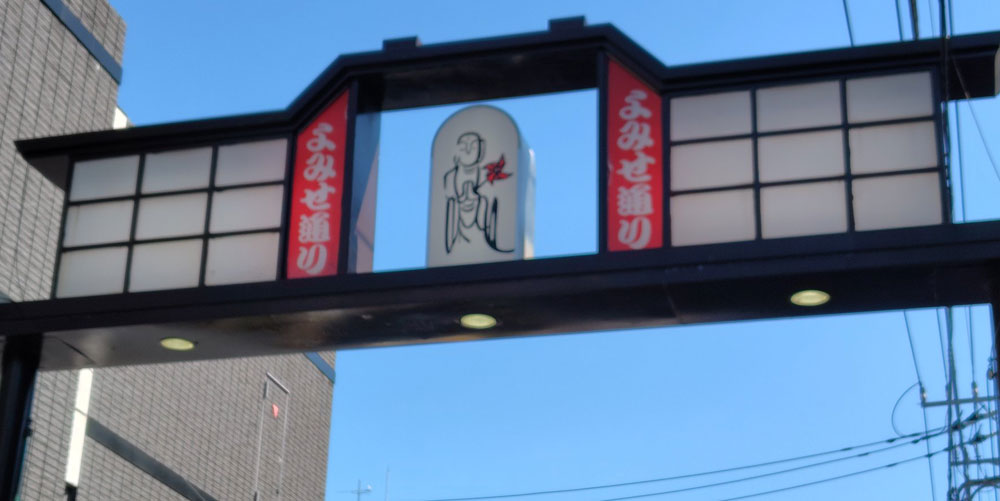
Having walked through Yanaka Ginza from the Nippori side to the opposite west exit, next we head towards the Nezu area.
Turn left onto the road beyond the shopping arcade and walk south for a short while to reach the vicinity of Tokyo Metro Chiyoda Line's Sendagi Station. From this area towards Nezu Station, narrow alleys known colloquially as “Snake Path” and Yomise Street continue.
Snake Path

Snake path is, as its name suggests, a strangely winding alleyway.
In fact, the Aizome River once flowed here. Nowadays, the river runs underground as a culvert, while the surface has been transformed into a promenade, leaving behind the winding shape of the former riverbed. This quiet backstreet, rich in greenery and free from traffic, has a strangely relaxing effect when strolling along it. It is a hidden gem well worth exploring during a stroll through Yanesen.
Along the Snake Path, small, privately-run shops are dotted here and there. For example, there are shops like this.
- pásele, a café where you can enjoy freshly made churros and hot chocolate
- Le bage, renowned for its homemade bagels
- A charming little shop selling sundries and books, ‘gururi’
As you stroll along, you'll come across numerous distinctive shops. One of the pleasures of exploring this area is the unexpected appearance of galleries and boutiques housed in converted old residences.
Yomise Street

Homemade Roast Beef One-Plate Lunch
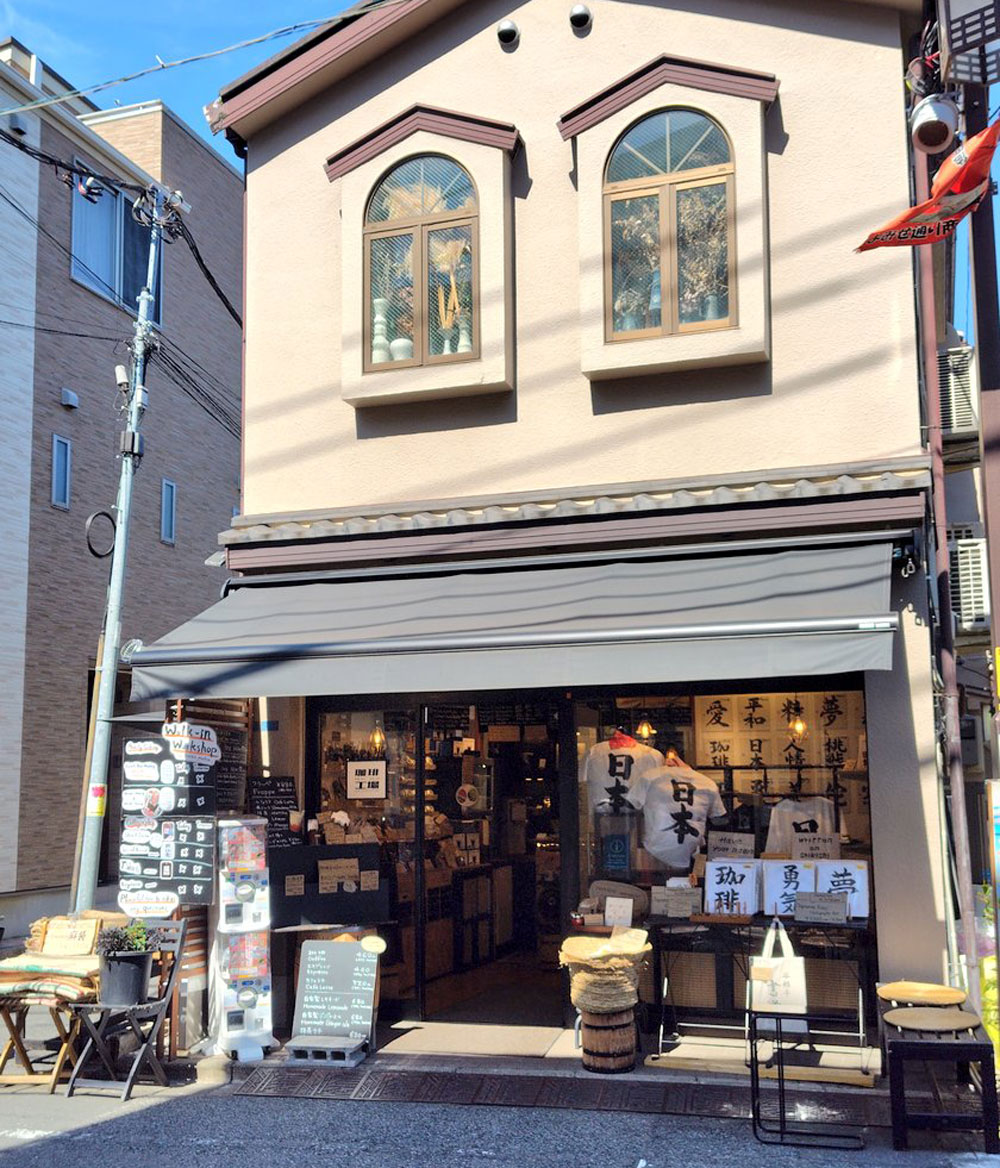
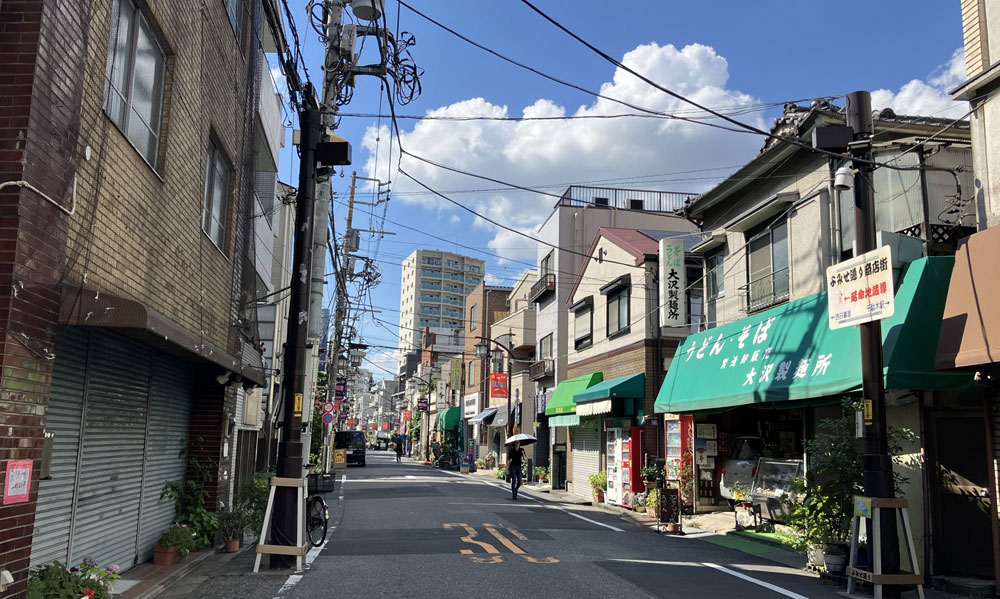
Continuing along the Snake Path leads to Yomise Street, a thoroughfare where traditional shops stand alongside new cafés. It is said to have earned its name “Yomise” (evening stalls) from the evening markets (street stalls) that once lined it during the Edo period.
Today, while the long-established eel restaurant “Yoshiya Yanaka Sohonten” maintains its presence in a stately building, stylish cafés are also increasing in number. For example...
- CIBI Tokyo, an Australian-born café... where you can enjoy home-roasted coffee and health-conscious brunch.
- Café ‘Hanamori’ ·· Enjoy a roast beef one-plate lunch.
- The ‘Yanesen az cafe’ in a renovated old house... Japanese-style sweets are popular.
Moreover, there are unique shops such as Kyushudo, a shop and café specialising in ingredients sourced from Kyushu, offering plenty of spots to pop into during your stroll.
Nezu Shrine: Passing through the historic shrine and its vermilion thousand torii gates
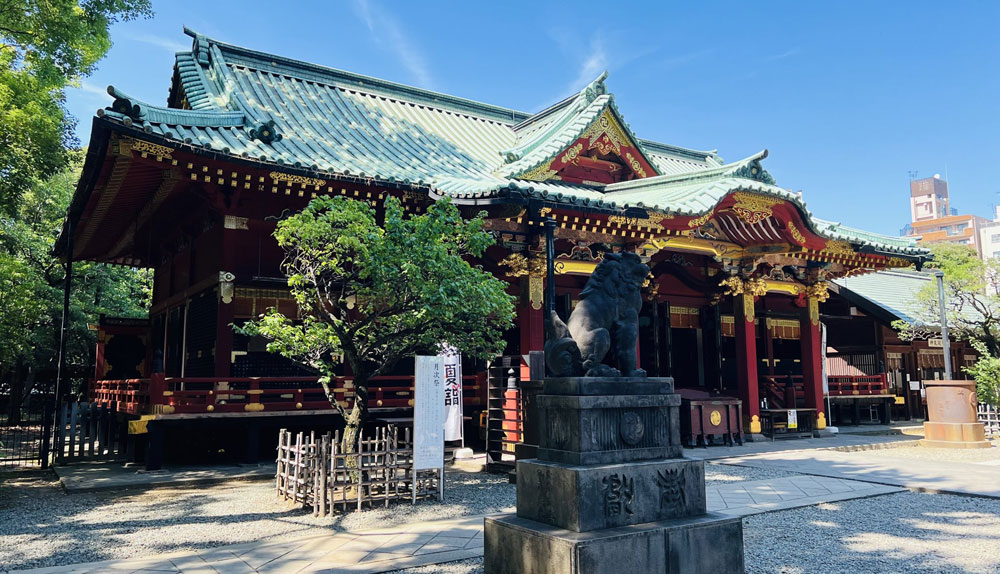
Passing through Snake path and Yomise-dori and crossing Shinobazu-dori (the main street), the torii gate of Nezu Shrine comes into view.
Nezu Shrine is a venerable shrine said to have been founded over 1,900 years ago, with its main hall constructed at its present location in 1706 during the Edo period.
The present shrine buildings, including the main hall, tower gate, and Chinese-style gate, retain their original Edo period appearance and are designated as Important Cultural Properties of Japan. They are also known for having been dedicated by Yanagisawa Yoshiyasu, a retainer of Tokugawa Tsunayoshi.



The shrine grounds, surrounded by deep greenery despite their urban location, possess a solemn atmosphere. Behind the main hall lies the azalea garden, the setting for Bunkyo Ward's famous event, the Bunkyo Azalea Festival. While bustling during the azalea season, it is otherwise a peaceful, lush garden open to the public free of charge. Visitors can stroll while admiring the seasonal flowers.
Thousand Torii Gates
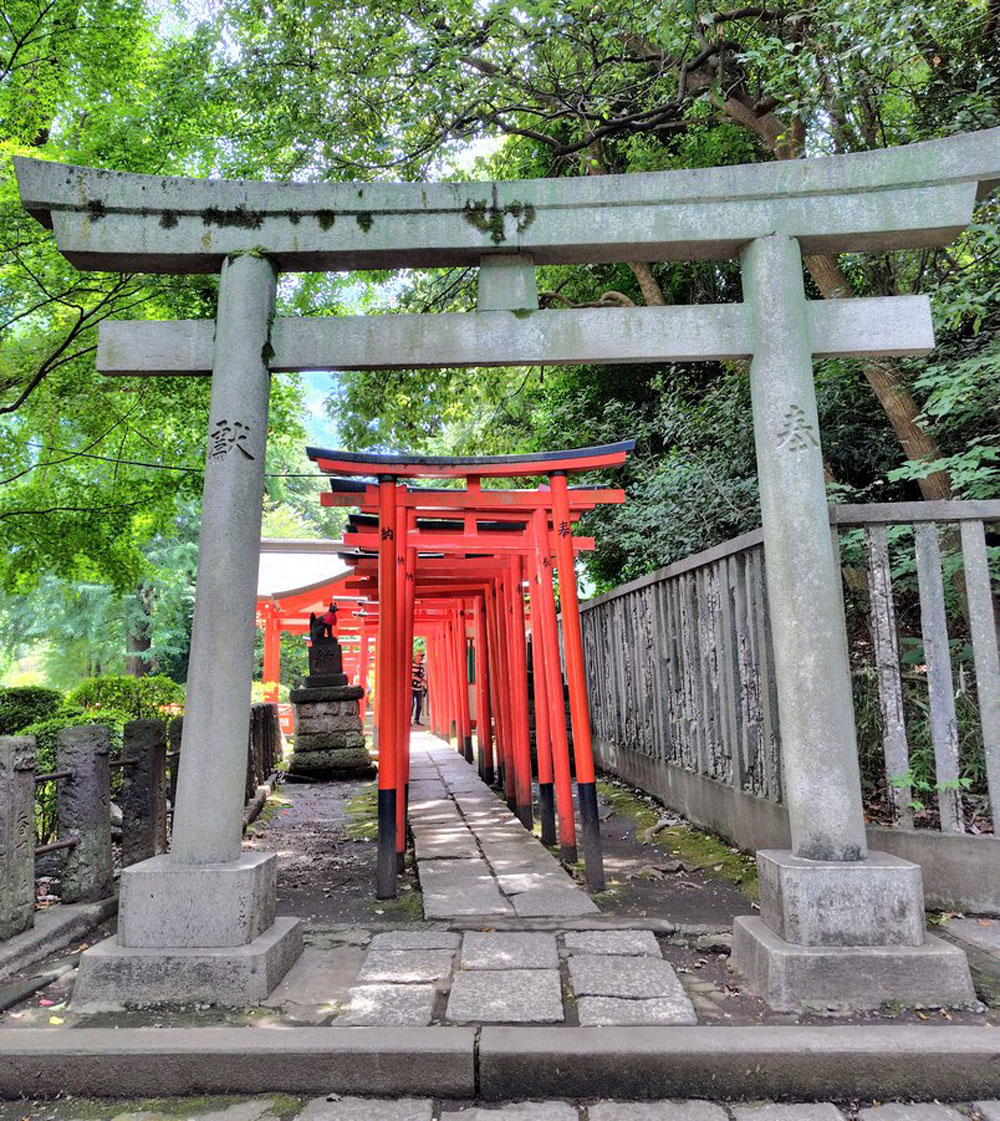

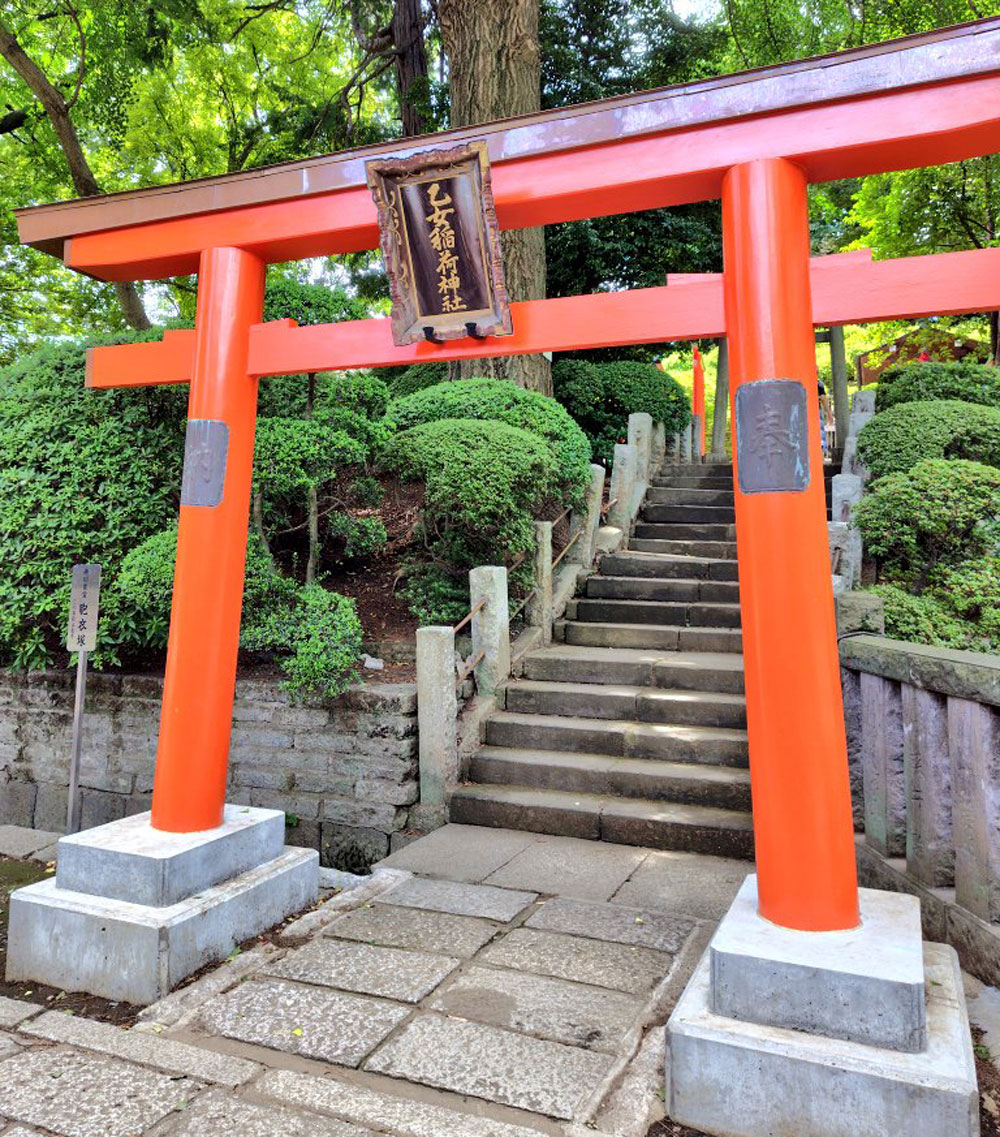
Another unmissable sight at Nezu Shrine is this row of “thousand torii gates”. Though smaller in scale than Fushimi Inari in Kyoto, the spectacle of red torii gates of various sizes lining the path in multiple layers is truly magnificent. In recent years, it has become popular among younger generations as an Instagrammable spot.
Passing through the torii gates lining the stone steps, the shrine of Otome Inari Shrine, surrounded by greenery, comes into view. Moreover, from the vicinity of these thousand torii gates, one can look down upon the shrine grounds' pond and the roofs of the shrine buildings, making it an excellent spot for photography.

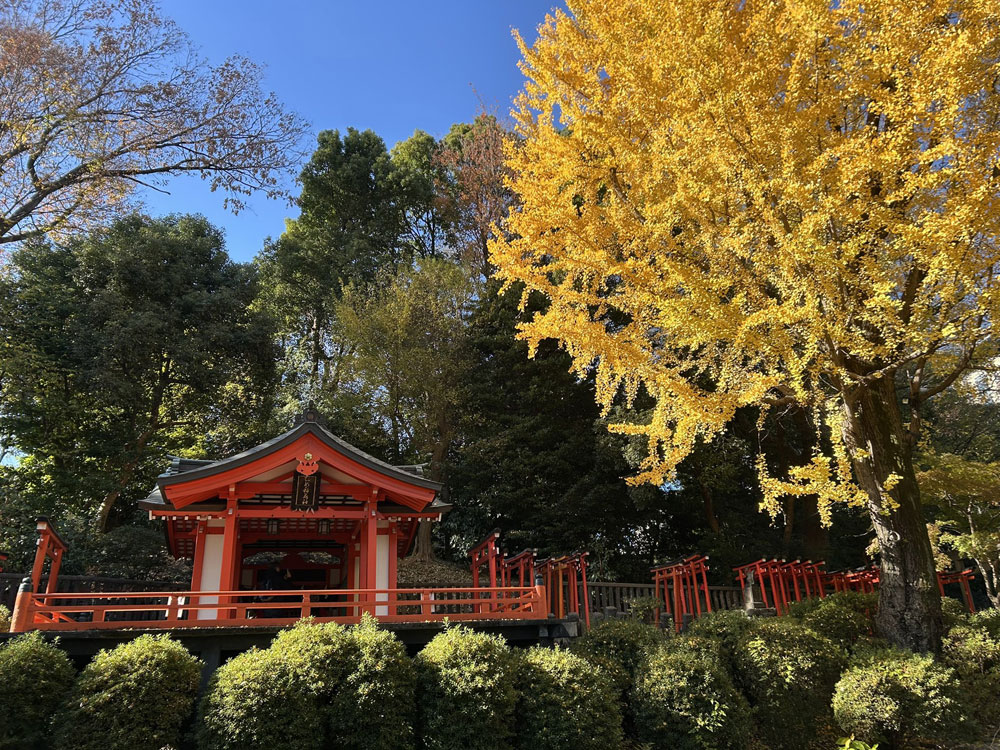
After exploring the grounds, it might be nice to take a break and relax in the Nezu area.
Near the approach before the torii gate of Nezu Shrine, you'll find Nezu's taiyaki (fish-shaped cakes), a shop retaining the charm of old downtown Tokyo. These are masterpieces: thin, crispy skin encasing a generous filling of sweet red bean paste. It's been the signature dish since the shop opened in 1957. Queues sometimes form when they're freshly baked, but taking a break to tuck into a piping hot taiyaki will make your fatigue vanish.
Additionally, near Nezu Station you'll find the renowned retro coffee shop “Kayaba Coffee” (a café housed in a traditional Japanese house dating back to 1938) and the sweet shop “Imogen”, famous for its sweet red bean jelly and zōni soup. Do pop in if you happen to be in the area.
From Nezu Shrine to Ueno Park

After thoroughly enjoying Nezu Shrine, we finally head towards our destination, Ueno Station.
The distance from Nezu Shrine to Ueno Station is approximately 1.5 kilometres as the crow flies. While several routes are possible, the recommended path passes through Ueno Park. Upon leaving Nezu Shrine, walk east along Kototoi-dori for about ten minutes to reach the southern edge of Ueno Park, home to Shinobazu Pond.
Ueno Park, opened in 1873, is one of Japan's first public parks and was formerly the grounds of Kan'ei-ji temple during the Edo period. Its vast grounds feature historical sites such as Ueno Tōshō-gū Shrine (with its magnificent main hall, a must-see) and Kiyomizu Kannon Hall (built in the style of Kyoto's Kiyomizu-dera temple).
Moreover, Ueno is also renowned as a hub for numerous museums and art galleries. In the central part of the park stand Japan's largest museum, the Tokyo National Museum, alongside the National Museum of Nature and Science, the National Museum of Western Art, the Tokyo Metropolitan Art Museum, and the Ueno Royal Museum.
For those with an interest in art and culture, incorporating it into your walking route is a good idea. However, the interior is incredibly vast. You could easily spend half a day to a full day in the museum alone. Rather than including it in this walk, I recommend planning a separate schedule dedicated solely to the museum.
Ueno Park also boasts an endless array of attractions, including the popular Ueno Zoo for families with children, cafés with terraces perfect for a break, and the Fountain Plaza. You'll never run out of things to see.
Destination: Ueno Station

Proceeding north through the park will bring you to your destination: JR Ueno Station's Park Exit. Well done!
Conclusion
How did you find it? The distance from the starting point at Nippori Station to Ueno Station is approximately 2–3 kilometres, but this route takes you around the Yanesen area, meaning you'll walk a total of about 4 kilometres (via Yanaka Ginza, Nezu Shrine, and Ueno Park).
The journey takes just under two hours on foot alone, but please allow around four to five hours in total, including time for exploring and resting along the way. While it is a substantial walk, it is also a route rich in discoveries and encounters unique to the old town.
From Yanaka to Nezu and Ueno, this route offers a rich immersion in Tokyo's historic downtown. Enjoy temple and shrine visits and savour the local cuisine to your heart's content. It promises to be a thoroughly rewarding day's stroll.
May this stroll through the charming working-class neighbourhoods and lush greenery reveal new charms of Tokyo's Yanesen area.